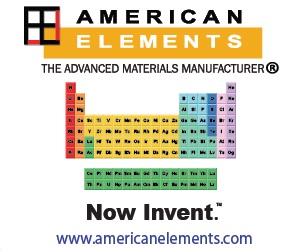
April 22 - 26, 2024
Seattle, Washington
May 7 - 9, 2024 (Virtual)
Symposium Supporters
2024 MRS Spring Meeting & Exhibit
EL07.10.01
Reference:
Zheng H.; Zhang R.; Wu X.; Zhang Q.; Wu Z.; Wong P. D. W.; Chen J.; Xu Q.; Loh K. P. J. Am. Chem. Soc. 2023, 145, 3569−3576.
Strain-Driven Solid−Solid Crystal Conversion in Chiral Hybrid Perovskites with Paramagnetic-To-Ferromagnetic Transition
When and Where
Apr 25, 2024
5:00pm - 7:00pm
5:00pm - 7:00pm
Flex Hall C, Level 2, Summit
Presenter(s)
Co-Author(s)
Haining Zheng1,Kian Ping Loh1
National University of Singapore1
Abstract
Haining Zheng1,Kian Ping Loh1
National University of Singapore1
Hybrid organic−inorganic perovskites (HOIPs) are promising stimuli-responsive materials (SPMs) owing to their molecular softness and tailorable structural dimensionality. The design of mechanically responsive HOIPs requires an in-depth understanding of how lattice strain induces intermolecular rearrangement that impacts physical properties. While chirality transfer from an organic cation to an inorganic lattice is known to influence chiral-optical properties, its effect on strain-induced phase conversion has not been explored. As opposed to achiral or racemic organic cations, chiral organic cations can potentially afford a new dimension in strain-responsive structural change. Herein, we demonstrate that mechanical strain induces a solid phase crystal conversion in chiral halide perovskite single crystals (R/S)-(FE)2CuCl4 (FE = (4-Fluorophenyl)ethylamine) from a 0D isolated CuCl4 tetrahedral to 1D corner-sharing CuFCl5 octahedral framework via the incorporation of Cu...F interaction and N−H...F hydrogen bonding. This strain-induced crystal-to-crystal conversion involves the connection of neighboring 0D CuCl4 tetrahedra via Cu2+−Cl−−Cu2+ linkages as well as the incorporation of an F-terminated organic cation as one of the X atoms in BX6 octahedra, leading to a reduced band gap and paramagnetic-to-ferromagnetic conversion. Control experiments using nonchiral or racemic perovskite analogs show the absence of such solid phase conversion. To demonstrate pressure-sensitive properties, the 0D phase is dispersed in water-soluble poly(vinyl alcohol) (PVA) polymer, which can be applied to a large-scale pressure-induced array display on fibrous Spandex substrates via a screen-printing method.Reference:
Zheng H.; Zhang R.; Wu X.; Zhang Q.; Wu Z.; Wong P. D. W.; Chen J.; Xu Q.; Loh K. P. J. Am. Chem. Soc. 2023, 145, 3569−3576.
Symposium Organizers
John Heron, University of Michigan
Morgan Trassin, ETH Zurich
Ruijuan Xu, North Carolina State University
Di Yi, Tsinghua University
Symposium Support
Gold
ADNANOTEK CORP.
Bronze
Arrayed Materials (China) Co., Ltd.
NBM Design, Inc.
ADNANOTEK CORP.
Bronze
Arrayed Materials (China) Co., Ltd.
NBM Design, Inc.
Session Chairs
Morgan Trassin
Ruijuan Xu
Di Yi



















